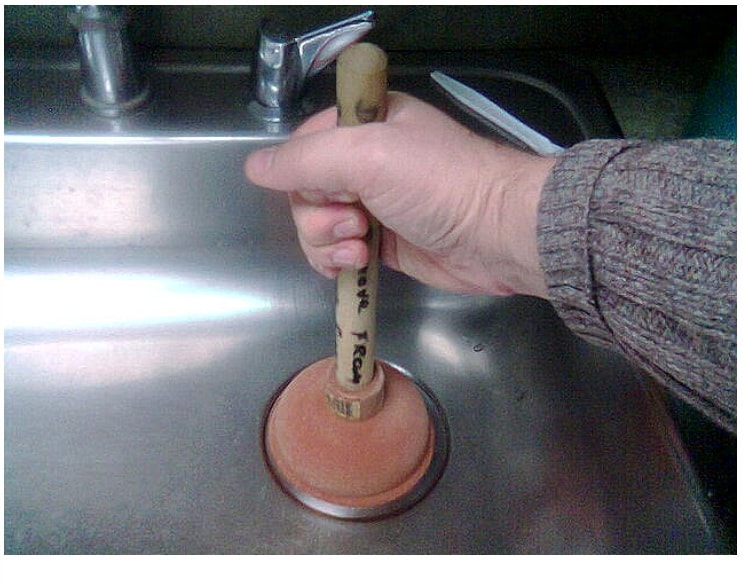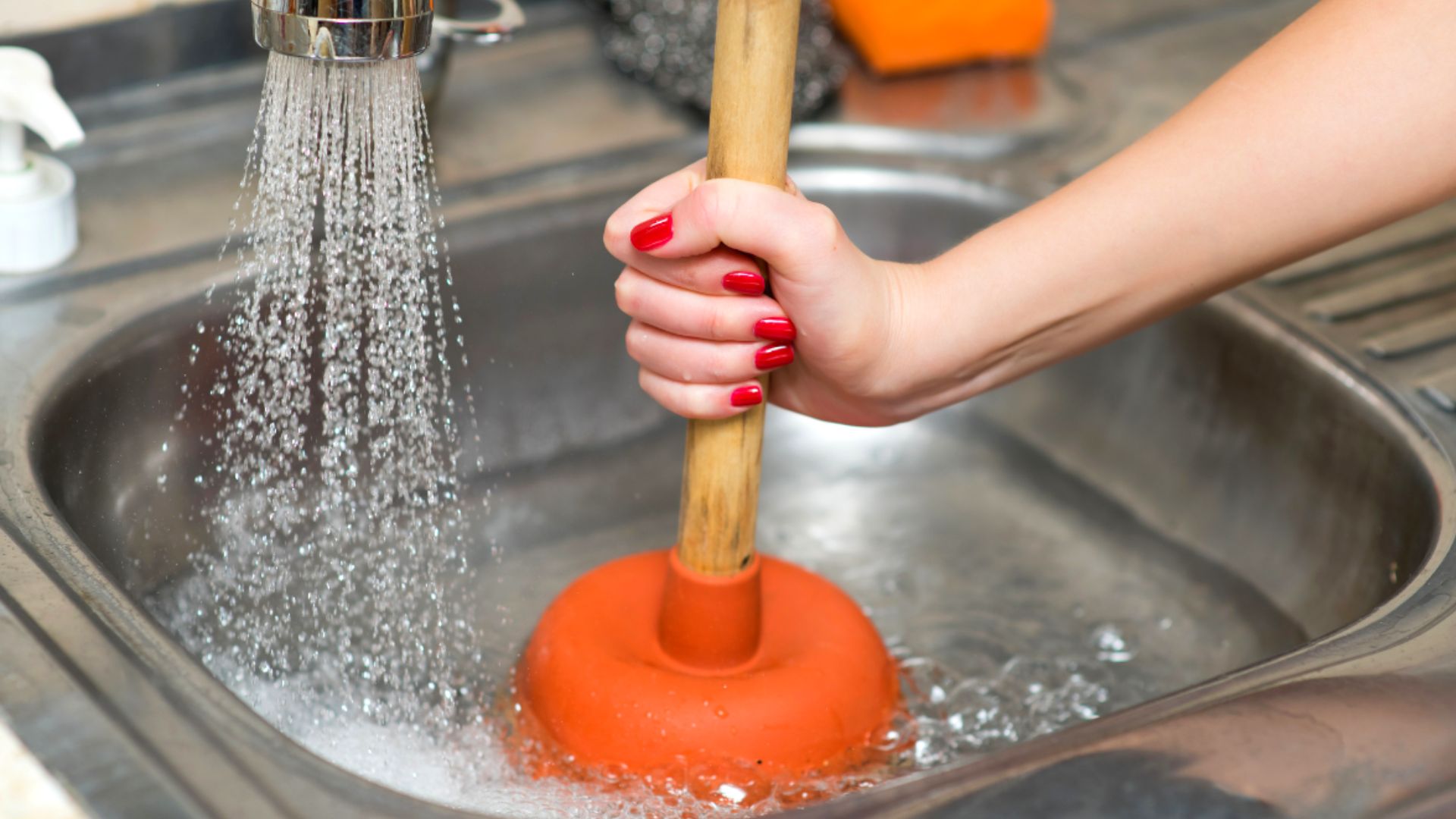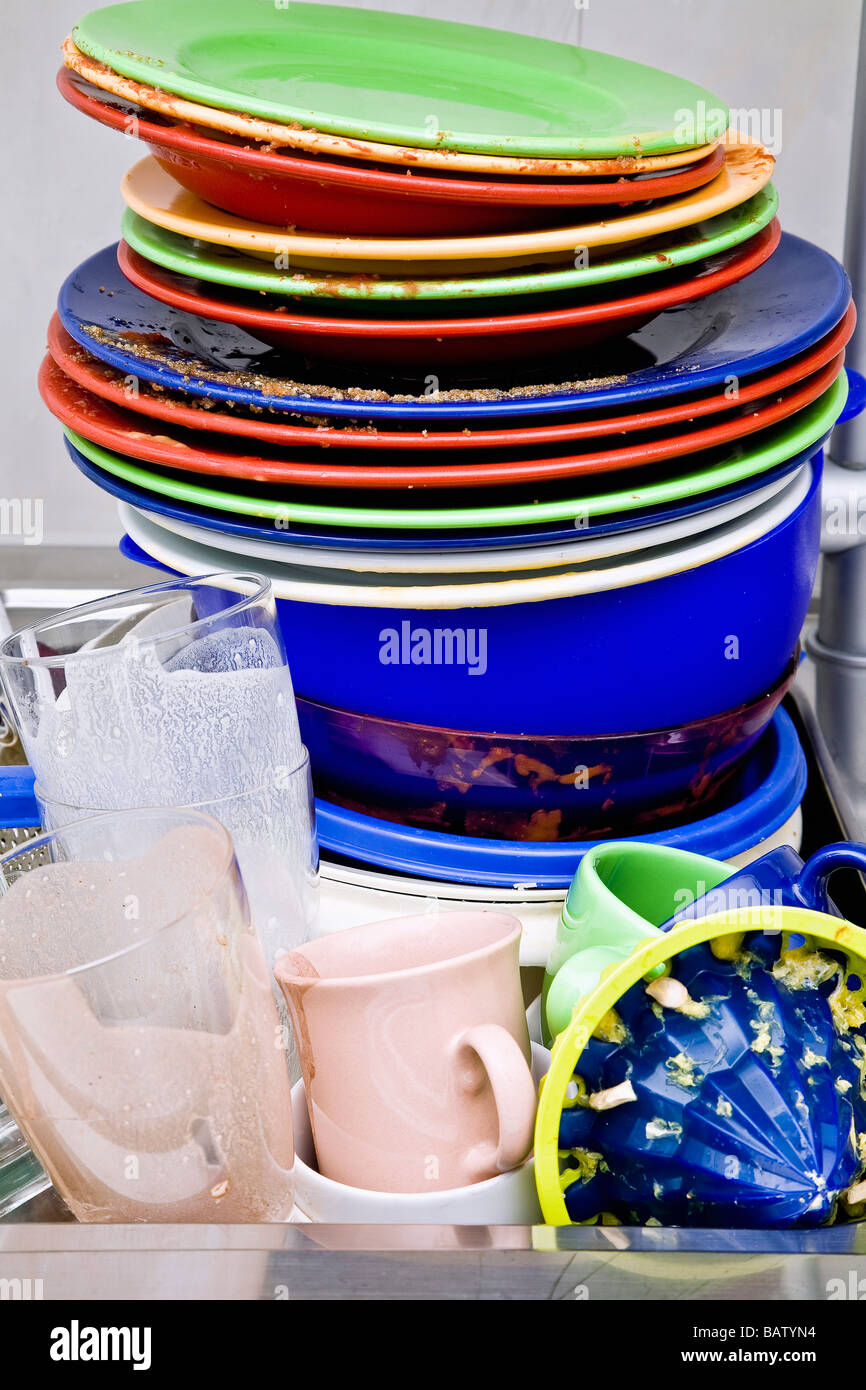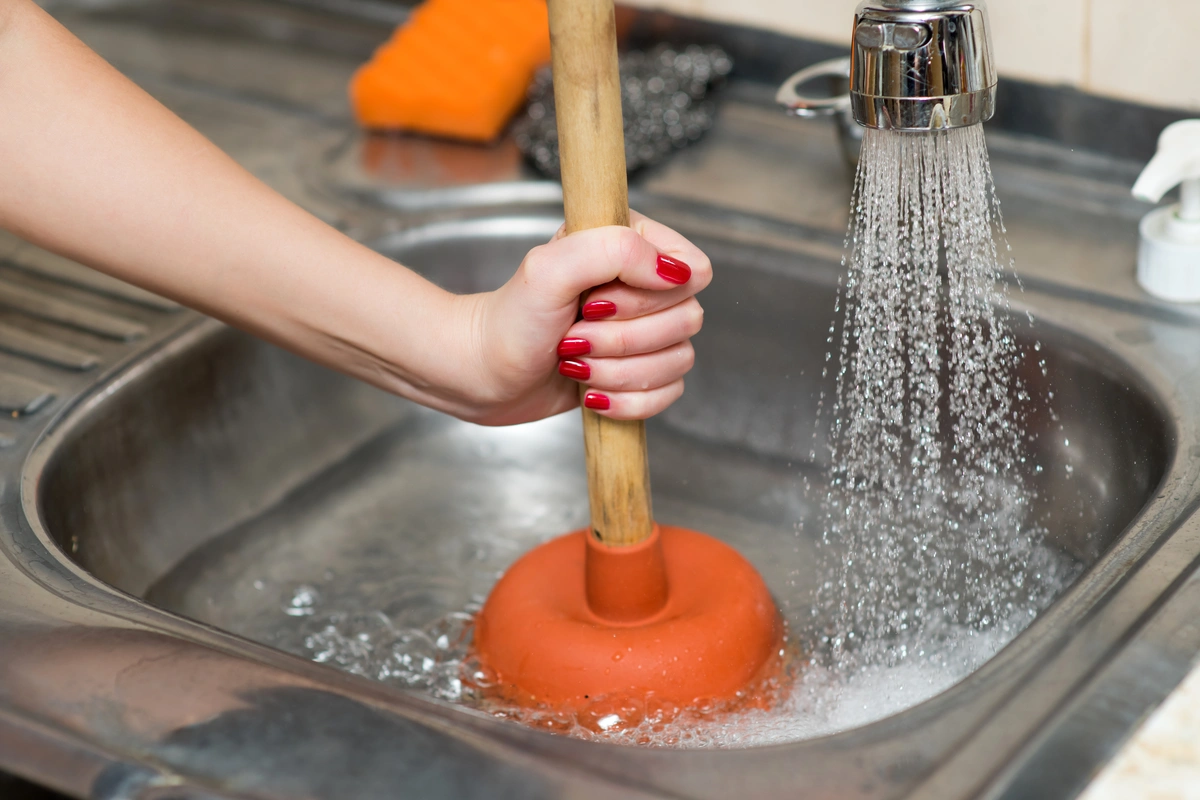Dealing with a clogged kitchen sink can be a frustrating and messy experience. But before calling a plumber and spending money, try using a plunger to clear the blockage. Not only is it a quick and easy solution, but it can also save you time and money. Here's how to plunge a kitchen sink and get your drains flowing smoothly again.How to Plunge a Kitchen Sink
Before starting, make sure you have the right kind of plunger for the job. A standard cup plunger works best for kitchen sinks, as it creates a seal around the drain. Make sure to choose a plunger with a flange, or a rubber extension on the bottom, for better suction. Next, fill the sink with enough water to cover the rubber cup of the plunger. This will help create the necessary pressure for plunging. If your sink has two basins, make sure to cover the other drain with a wet cloth or plug to ensure maximum suction.Unclogging a Kitchen Sink with a Plunger
Place the plunger over the drain and press down firmly. Then, pull up quickly to create a suction that will dislodge the blockage. Repeat this motion several times. If the water starts to drain, continue plunging until it fully clears. If not, try adding more water and plunging again. For tougher clogs, you may need to plunge with more force or for a longer period of time. If the blockage persists, try using a drain snake or calling a professional plumber.Using a Plunger to Clear a Clogged Kitchen Sink
There are a few techniques you can try to maximize the effectiveness of plunging. First, you can try using a plunger with a handle that extends for more leverage. This will make it easier to create a stronger suction and plunge with more force. You can also try using a plunger with a flat bottom instead of a cup. This type of plunger is designed for flat surfaces, such as sinks and bathtubs, and may be more effective for clearing tough clogs.Plunging Techniques for a Kitchen Sink
The answer is yes! A plunger is a simple and effective tool for unclogging a kitchen sink. It uses the power of suction to dislodge and remove the blockage. However, if you have a garbage disposal, do not use a plunger as it can damage the blades. In this case, it's best to use a drain snake or call a professional.Can You Use a Plunger on a Kitchen Sink?
To ensure success when plunging a clogged kitchen sink, there are a few tips to keep in mind. First, try to create a tight seal between the plunger and the drain. This will help create the necessary suction to clear the blockage. Additionally, make sure to wear rubber gloves to protect your hands from any bacteria or debris that may be in the sink. After plunging, be sure to clean and disinfect the plunger to avoid spreading any germs.Plunging Tips for a Clogged Kitchen Sink
If you've tried plunging and the sink is still clogged, there may be an issue with the drain itself. In this case, you can try using a drain snake to reach and remove the blockage. If you're not comfortable using a drain snake, it's best to call a professional plumber to avoid causing further damage. However, if the water starts to drain after plunging, continue plunging until it flows freely. Once the clog is cleared, run hot water down the drain for a few minutes to flush out any remaining debris.Clearing a Kitchen Sink Drain with a Plunger
When it comes to unclogging a kitchen sink, both a plunger and a drain snake can be effective tools. However, a plunger is usually the first line of defense and can be used for minor clogs or as a preventative measure. A drain snake, on the other hand, is better suited for tougher clogs that a plunger can't handle. If you have a recurring clog or a particularly stubborn one, it's best to invest in a drain snake for future use. But for minor clogs, a plunger is a cost-effective and efficient solution.Plunger vs. Drain Snake for a Clogged Kitchen Sink
To summarize, here are the steps to properly plunge a kitchen sink: 1. Choose the right plunger with a flange for better suction. 2. Fill the sink with enough water to cover the rubber cup of the plunger. 3. Place the plunger over the drain and press down firmly. 4. Pull up quickly to create a suction and dislodge the blockage. 5. Repeat as necessary until the drain is cleared. 6. Run hot water down the drain for a few minutes to flush out any remaining debris.How to Properly Plunge a Kitchen Sink
If your kitchen sink is backed up and overflowing, it's important to act quickly to avoid a messy and potentially damaging situation. Using a plunger can quickly and easily clear the blockage and prevent further damage. However, if the water doesn't start to drain after a few attempts, it's best to call a professional plumber. In conclusion, a plunger is a simple yet effective tool for unclogging a kitchen sink. With the right technique and a little bit of elbow grease, you can easily clear most clogs and get your sink back to working properly. However, if the clog persists or you're not comfortable using a plunger, don't hesitate to call a professional for assistance.Using a Plunger to Fix a Backed Up Kitchen Sink
Can You Plunger a Kitchen Sink?

The Importance of Proper Drainage in Kitchen Design
 When it comes to designing a kitchen, homeowners often focus on aesthetics and functionality. However, one crucial aspect that is often overlooked is drainage. A kitchen sink that is clogged or slow to drain can be a major inconvenience and can even lead to bigger plumbing issues. This is why it's important to know how to properly maintain your kitchen sink and whether or not you can use a plunger.
First and foremost, it's important to understand the cause of a clogged kitchen sink.
Most clogs are a result of food particles, grease, and other debris that get stuck in the pipes. Over time, these build-ups can cause blockages and slow down drainage. This is why it's essential to have a strainer in your sink to catch any food scraps and regularly clean it out.
So, can you use a plunger to unclog a kitchen sink?
The answer is yes, but the type of plunger you use is crucial. A traditional plunger with a flat bottom is not suitable for a kitchen sink as it won't create the necessary seal to dislodge the clog. Instead, you'll need a
cup plunger
with a dome-shaped bottom that can create a seal around the drain.
Now that you have the right plunger, here's how to properly use it on a kitchen sink.
First, fill the sink with enough water to cover the plunger's dome.
This will create suction and allow the plunger to work effectively. Make sure to cover any overflow holes with a cloth or tape to prevent air from escaping. Next, place the plunger over the drain and start plunging up and down with force. This should create enough pressure to dislodge the clog. Repeat this process a few times until the water starts to drain properly.
If the plunger is not successful in unclogging the sink, it's time to try a
drain snake
. This tool can reach deeper into the pipes and break up tougher clogs. However, if you're still unable to unclog the sink, it's best to call a professional plumber. They have the necessary tools and expertise to handle even the toughest clogs.
In conclusion, while a plunger can be used to unclog a kitchen sink, it's important to use the right type and technique. Regular maintenance and proper disposal of food scraps can also prevent clogs from happening in the first place. By keeping these tips in mind, you can ensure proper drainage in your kitchen and avoid any future plumbing issues.
When it comes to designing a kitchen, homeowners often focus on aesthetics and functionality. However, one crucial aspect that is often overlooked is drainage. A kitchen sink that is clogged or slow to drain can be a major inconvenience and can even lead to bigger plumbing issues. This is why it's important to know how to properly maintain your kitchen sink and whether or not you can use a plunger.
First and foremost, it's important to understand the cause of a clogged kitchen sink.
Most clogs are a result of food particles, grease, and other debris that get stuck in the pipes. Over time, these build-ups can cause blockages and slow down drainage. This is why it's essential to have a strainer in your sink to catch any food scraps and regularly clean it out.
So, can you use a plunger to unclog a kitchen sink?
The answer is yes, but the type of plunger you use is crucial. A traditional plunger with a flat bottom is not suitable for a kitchen sink as it won't create the necessary seal to dislodge the clog. Instead, you'll need a
cup plunger
with a dome-shaped bottom that can create a seal around the drain.
Now that you have the right plunger, here's how to properly use it on a kitchen sink.
First, fill the sink with enough water to cover the plunger's dome.
This will create suction and allow the plunger to work effectively. Make sure to cover any overflow holes with a cloth or tape to prevent air from escaping. Next, place the plunger over the drain and start plunging up and down with force. This should create enough pressure to dislodge the clog. Repeat this process a few times until the water starts to drain properly.
If the plunger is not successful in unclogging the sink, it's time to try a
drain snake
. This tool can reach deeper into the pipes and break up tougher clogs. However, if you're still unable to unclog the sink, it's best to call a professional plumber. They have the necessary tools and expertise to handle even the toughest clogs.
In conclusion, while a plunger can be used to unclog a kitchen sink, it's important to use the right type and technique. Regular maintenance and proper disposal of food scraps can also prevent clogs from happening in the first place. By keeping these tips in mind, you can ensure proper drainage in your kitchen and avoid any future plumbing issues.



















:max_bytes(150000):strip_icc()/woman-wearing-yellow-washing-up-gloves-to-unblock-sink-using-plunger-close-up-131987463-5887cfc03df78c2ccd92ec9e.jpg)













































:max_bytes(150000):strip_icc()/how-to-unclog-a-kitchen-sink-2718799_sketch_FINAL-8c5caa805a69493ab22dfb537c72a1b7.png)






































